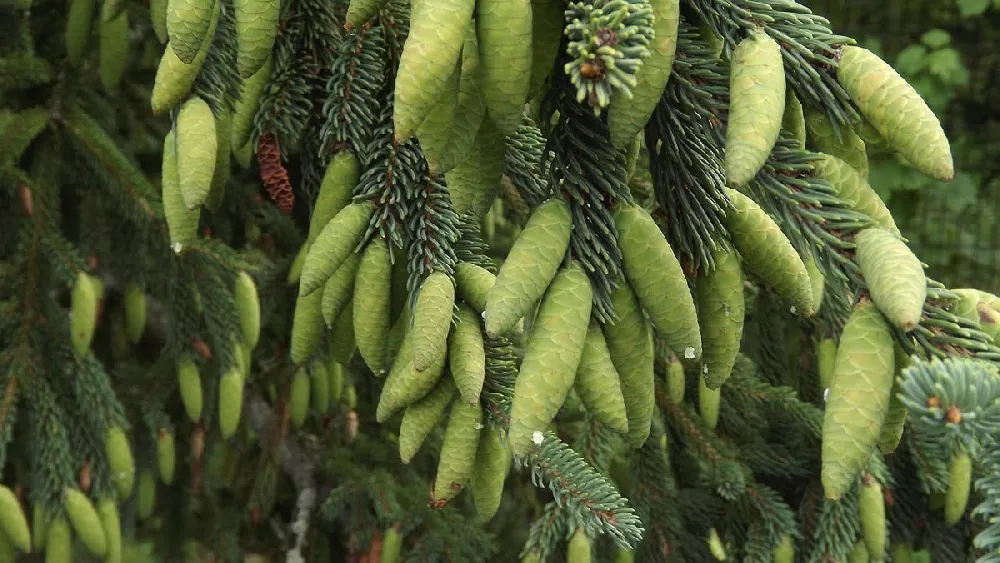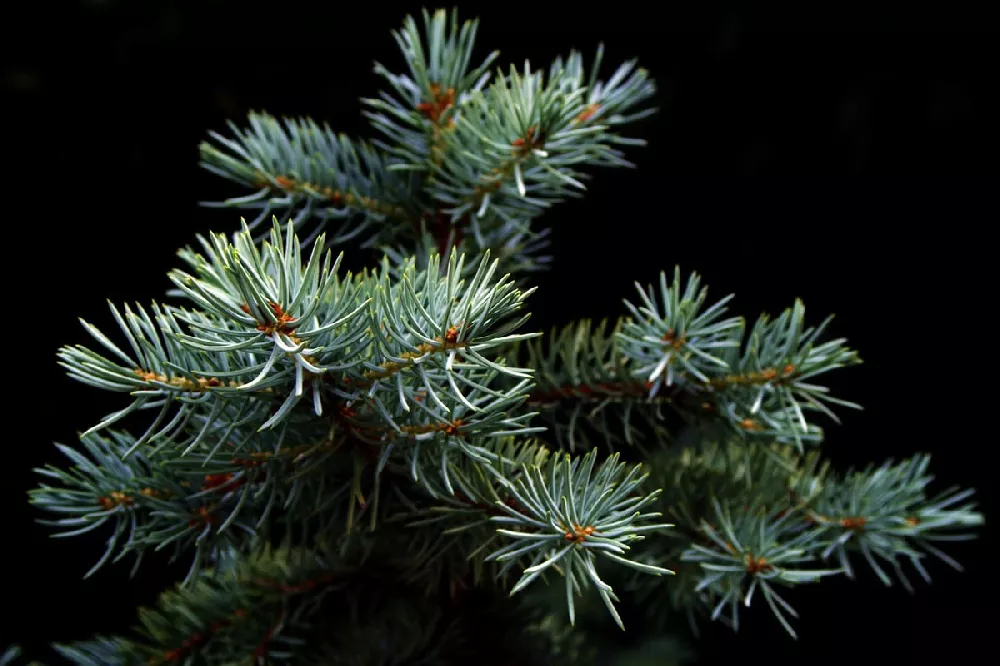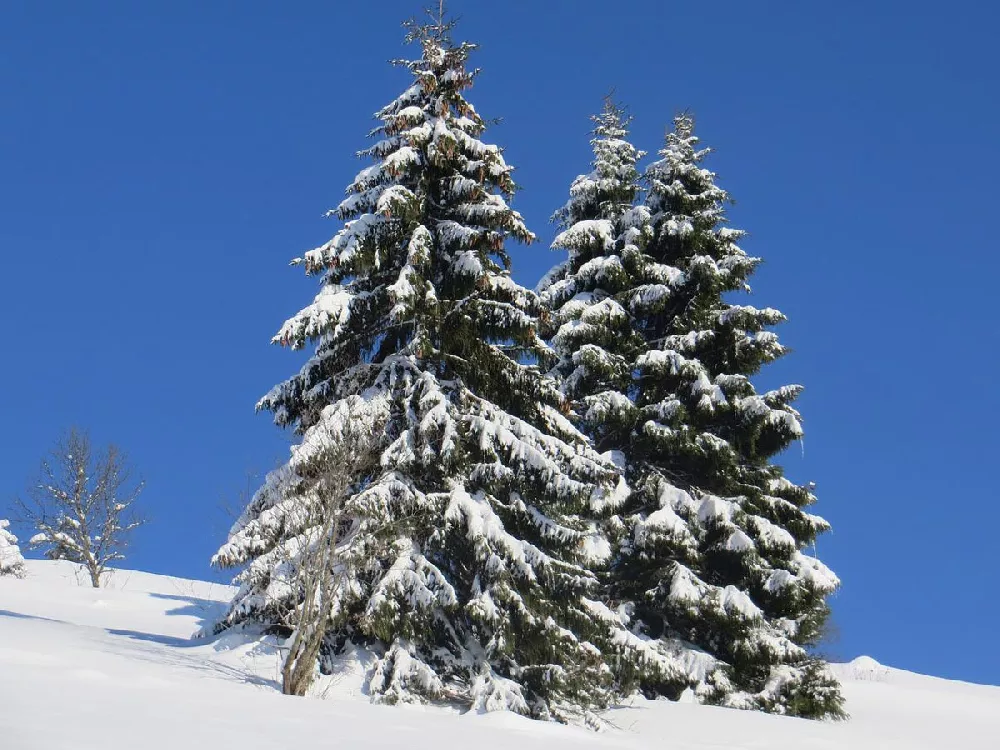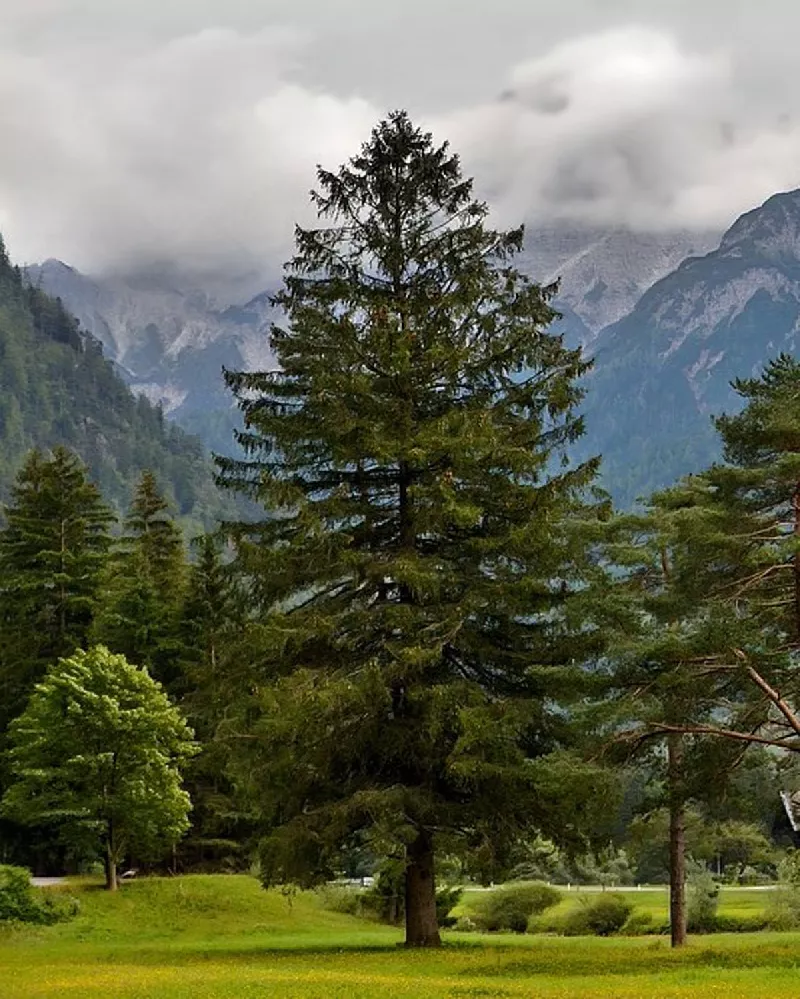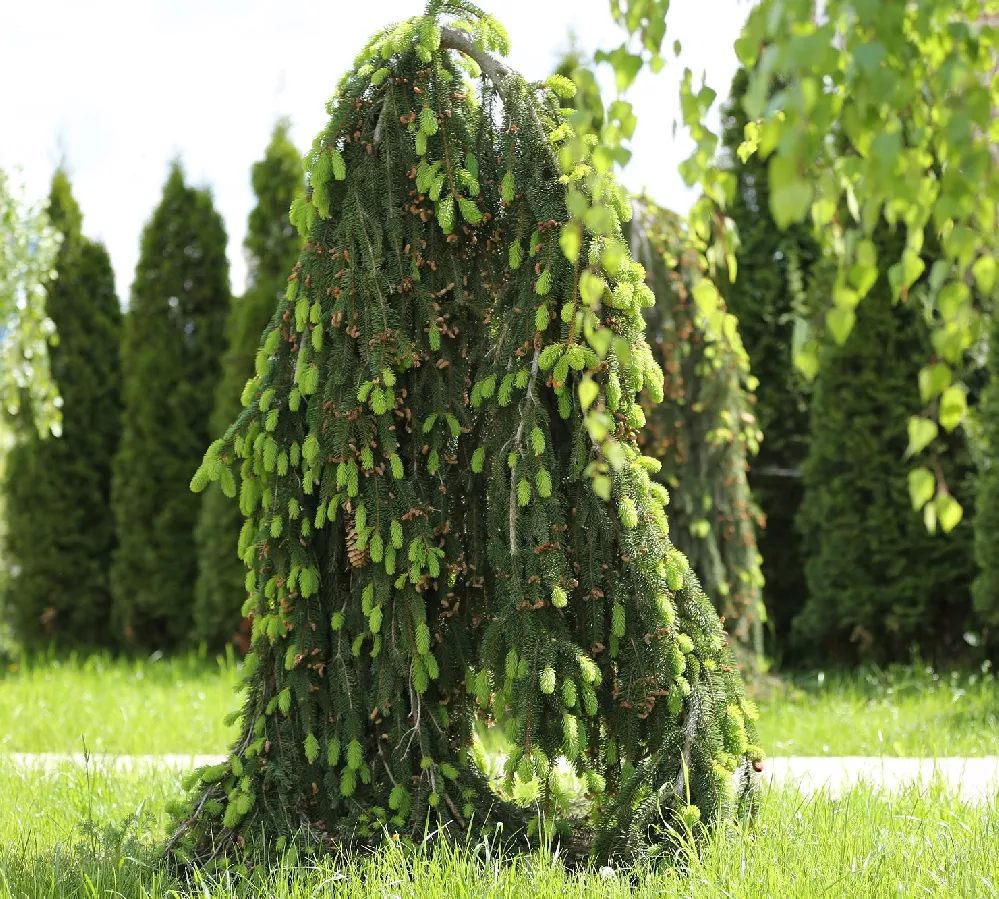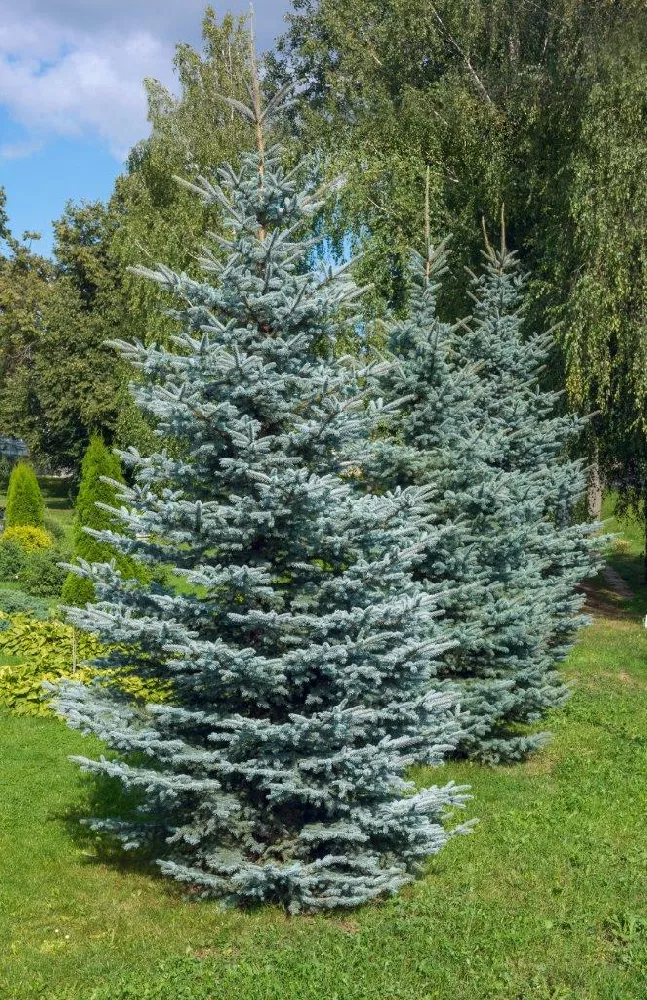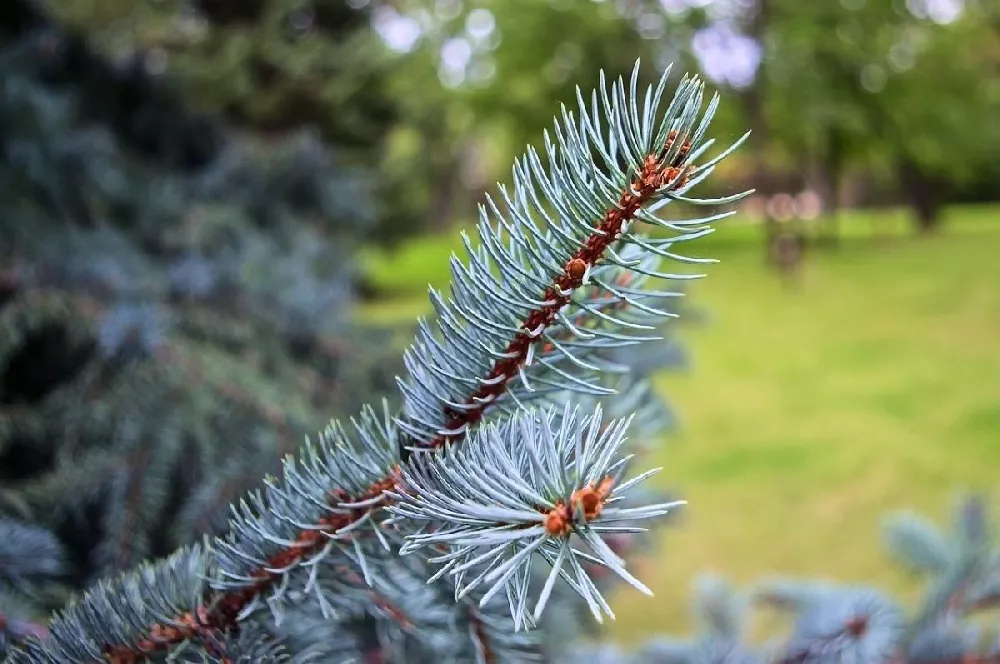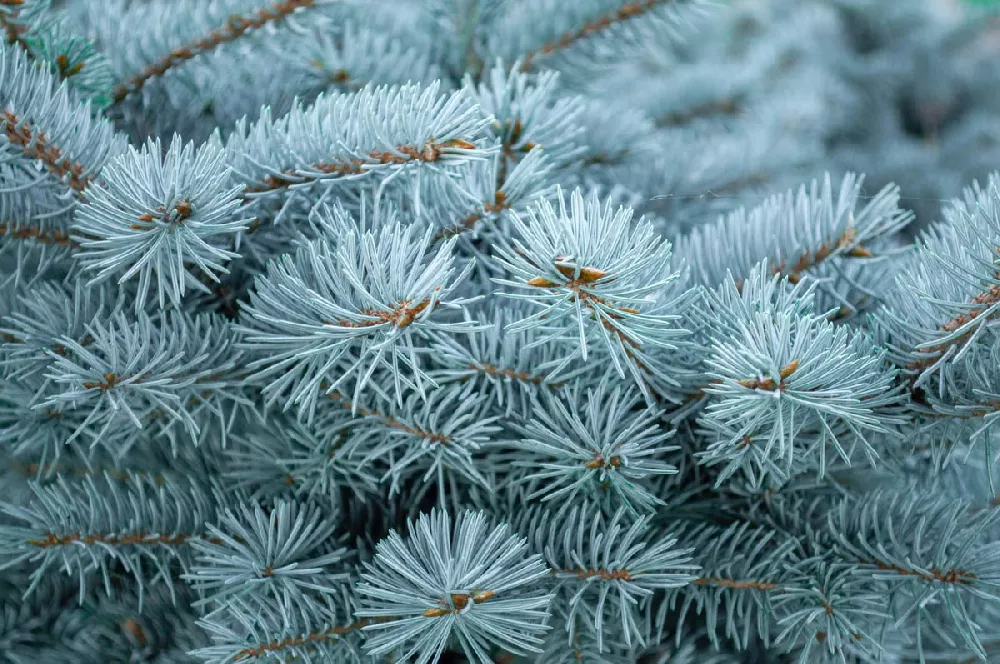- Home >
- Christmas Trees >
- White Spruce Tree
White Spruce Tree for Sale - Buying & Growing Guide
- Ships in 1-2 days
- 1-Year Warranty Eligible
- Pots or accessories are not included unless specified in the product options.
Shipping Details:
Once your order is shipped, you’ll receive an email with a tracking number and estimated delivery date. Most orders ship immediately, but some items are seasonal and may only ship in spring or fall. These products are noted on the website.
The White spruce tree, Picea glauca, is the workhorse of the horticultural world. This is not a fancy tree; it doesn't put on airs or need pampering and extra care. What it provides is the simple beauty of a classic conifer — while showing an amazing ability to grow where it's planted, regardless of soil type. If you live in the northern part of the U.S. and are looking for a tree that can anchor your entire landscape or provide a fool-proof hedge or windbreak, then the white spruce is your tree. Here are a few more reasons to love the white spruce tree:
- Its handsome, pyramidal form provides a stately backdrop for other plantings.
- Evergreen trees provide year-round interest, adding texture to winter snowscapes.
- The white spruce tree provides important habitat for wildlife, especially songbirds.
Plant Care
Sunlight

White spruce trees thrive when they have at least six hours of sunlight a day.
Watering
Established trees are drought-resistant, but they benefit from supplemental watering during hot or dry weather.
Fertilizing

Fertilize in spring with a general purpose, slow-release balanced fertilizer, such as a 10-10-10 formula.
Planting and Care
Planting instructions
Site your white spruce tree where it will receive at least six hours of sunlight a day, making sure to choose a site that is away from any overhead wires. Note that the tree’s mature width can be as much as 20 feet, so also keep it at least 10 feet away from your home or other structures. Choose a spot with soil that drains well, and dig in some organic fertilizer where you’ll be placing the tree, loosening the soil deeply. Unpot your sapling, and tease out any encircling roots, which can girdle the tree and eventually kill it. Dig a hole that’s as deep as the root ball and twice as wide, and place the tree in it. Holding it upright and steady, fill in around the roots with topsoil, tamping as you go to eliminate air pockets. Water thoroughly. Apply a 2- to 3-inch layer of an organic mulch, such as bark chips, around the root zone to conserve moisture.
Watering and nutrients
For its first year, water your tree thoroughly once a week, especially if conditions are dry. Taper back on watering once the tree is established and showing signs of strong growth. A mature white spruce tree shouldn’t need supplemental watering unless you’re experiencing extreme drought. Fertilize your spruce in the spring with a slow-release, general-purpose fertilizer, such as a 10-10-10 product.
Pollination
As conifers, white spruce trees have cones rather than flowers. There are both male and female cones on a single tree. The male cones release pollen, which is swept up in breezes and delivered to female cones. These eventually ripen into seed clusters that scatter near the tree.
Pruning
White spruce trees do not need regular pruning. Monitor your tree and trim out any broken, diseased, or damaged branches when you see them. The tree should naturally form a handsome pyramidal shape without pruning.
Pests, diseases, and animals
A healthy white spruce tree can fend off most insect infestations. Pests that may be seen on the tree include aphids, spruce spider mites, and sawfly. Your first line of defense is trimming out diseased wood and keeping the ground clear around the tree. Beneficial insects such as ladybugs can also help. Diseases of the spruce include cytospora canker and needle rust. The latter may be mitigated with an application of a fungicide at bud break.
Achieving maximum results
Knowing where to place your white spruce tree is an important consideration when planting. Keep in mind that these are moderately large trees with a potential maximum height of up to 60 feet and a width of up to 20 feet. If you’re gardening in a tiny city lot, therefore, they may not be the right tree for you. Those in suburban and rural areas, however, will find this tree an excellent addition to the garden, whether it’s an informal cottage garden or a more formal landscape. For example, several of these trees planted in a line make a great privacy hedge or windscreen. Its symmetrical form makes the white spruce suited for planting matched pairs at the head of a driveway. And three planted in proximity to each other form a charming mini-forest which will provide shelter for numerous small animals and birds.
FAQs
Where can I grow white spruce trees?
In the U.S., White Spruce Trees grow best in USDA hardiness zones 2 through 6, which covers most of the northern states, including New England. It also grows well throughout most of Canada. In fact, the tree is native to the northern zones of North America, and it grows wild from the Great Lakes to Alaska.
Can I use a white spruce tree as a Christmas tree?
Yes. In fact, this is its most common use in the U.S., where it populates Christmas tree farms throughout the northern part of the country. You can, of course, cut down your white spruce tree for use as a Christmas tree when the height is right for your home, but consider growing it as a living Christmas tree. You can decorate it each year with seed balls and other food for the wildlife that will call your tree home.
Is the white spruce tree messy?
The white spruce is one of the least messy trees that you will ever grow. Since it is an evergreen, it keeps its needles in the winter. But even evergreens shed their needles eventually — most trees lose needles every two to four years. Spruce trees, however, retain their needles for five to seven years before dropping them, so there is little cleanup to do when you have a white spruce.
Compare Similar Products
You can't add more Product Name - Product size to the cart.
OK